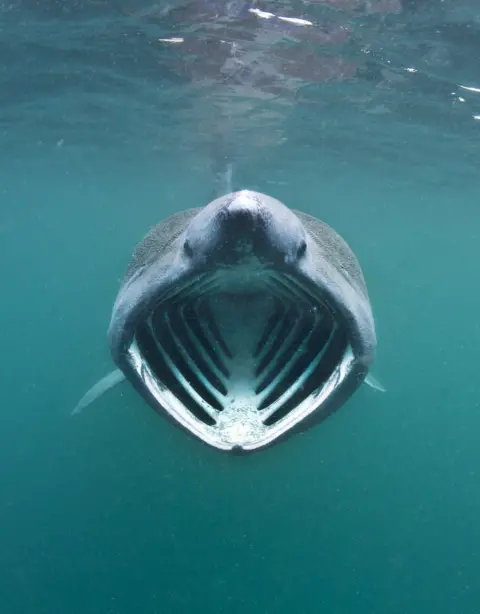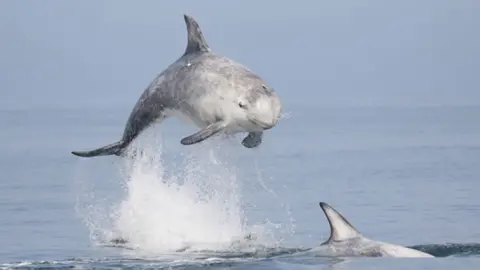Backing sought for basking shark 'safe zone' in Scotland
 Alexander Mustard
Alexander MustardScotland could be the location of the world's first protected area for basking sharks, say conservationists.
Large groups of the fish gather in the Sea of the Hebrides from May to October to feed on plankton.
The Scottish Wildlife Trust and Marine Conservation Society want part of the sea to be designated a marine protected area (MPA).
The Scottish government is consulting on the plan and the groups have urged the public to show support.
Three other proposed MPAs - North-east Lewis, Shiant East Bank and Southern Trench - are also the subject of government consultation.
Under the Sea of the Hebrides proposal. the MPA would cover an area between the east coast of the Western Isles and west coasts of Skye, Mull and the Ardnamurchan Peninsula.
The sea is a habitat for whale and dolphins as well as basking sharks.
 Alexander Mustard
Alexander Mustard
Dr Sam Collin, of the Scottish Wildlife Trust, said: "Basking sharks are only in Scottish seas for around six months of the year but it is vital that we do all we can to protect them from harm.
"The proposed MPA is a welcome step forward for the conservation of this threatened species and adds to a growing network of protected areas around Scotland."
Calum Duncan, of the Marine Conservation Society, said Scotland's wildlife and environment were of "immense value" both in their own right and to Scotland's "global reputation".
He said: "We urge as many people as possible to join our campaign to ensure basking sharks, and other features, have better protection in Scottish waters."
Stuart McMillan, SNP MSP for Greenock and Inverclyde and a "species champion" for the basking shark said marine protected areas offered a chance to "safeguard precious marine life for future generations".
 Eleanor Stone
Eleanor StoneBasking sharks are the second largest fish in the world, reaching lengths up to 10m (33ft).
They have no teeth and feed on microscopic plankton with their huge, wide-open mouths.
Every summer the sharks gather in large numbers around small islands between Skye and Mull, off Scotland's west coast.
They are also found off the islands of Coll, Tiree and Hyskeir, before later migrating south to waters around Madeira and the Canary Islands off west Africa.
